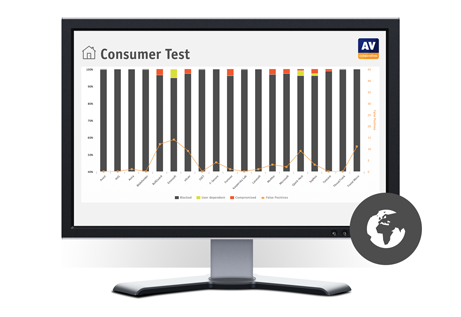Gandalf_The_Grey
Level 85
Thread author
Verified
Honorary Member
Top Poster
Content Creator
Well-known
- Apr 24, 2016
- 7,875
The second half-year results of the ongoing Consumer Real-World Protection Test are now available!
Real-World Protection Test July-October 2020 - AV-Comparatives
Highest and lowest protection rates revealed for 17 popular Windows antivirus programs
Independent, ISO-certified security testing lab AV-Comparatives has released the results of its 2020 H2 Consumer Real-World Protection Test. Popular anti-malware programs for Microsoft Windows from 17 different vendors were put through their paces. These were (alphabetically): Avast, AVG, Avira, Bitdefender, ESET, F-Secure, G Data, K7, Kaspersky, McAfee, Microsoft, NortonLifeLock, Panda, Total AV, Total Defense, Trend Micro and Vipre.
The tested products had to defend against over 750 recent and prevalent malicious programs, downloaded from the Internet. They were assigned one of four possible award categories, according to how well they performed in the test. From lowest to highest, the categories are: Tested, Standard, Advanced, and Advanced+.
The Consumer Real-World Protection Test checks each security product’s ability to protect a PC against threats originating on the Internet. The tested products can use all of their protection mechanisms, such as URL blockers, reputation services, cloud signatures and behavioural detection.
To ensure that the anti-malware programs do not plague the user with false alarms, a false-positives test is included in the Real-World Protection Test. This involves downloading and executing harmless program files, and browsing to harmless websites, to check if any of these are incorrectly identified as malicious. Products with above-average levels of false alarms have their award level downgraded.
The Consumer Real-World Protection Test is part of AV-Comparatives’ Main Test Series for consumer products. The Test Series also includes the Malware Protection Test and the Performance Test. The former checks the ability of antivirus products to protect against malicious files already on the system, or coming from an external drive or over the local area network. The Performance Test checks what effect each product has on the speed of the PC. Together with the Real-World Protection Test, these tests provide an all-round view of a security product’s technical capabilities.
Like all AV-Comparatives’ public reports, the report of the 2020 Consumer Real-World Protection Test can be downloaded free of charge from the institute’s website, www.av-comparatives.org. AV-Comparatives is an independent testing lab based in Innsbruck, Austria, and has been publicly testing computer security software since 2004. It is ISO 9001:2015 certified for the scope “Independent Tests of Anti-Virus Software”. It also holds the EICAR certification as a “Trusted IT-Security Testing Lab”.

Consumer Real-World Protection Test July-October 2020
The second half-year results for 2018 of AV-Comparatives' Consumer Real-World Protection Test are now available
 www.av-comparatives.org
www.av-comparatives.org

